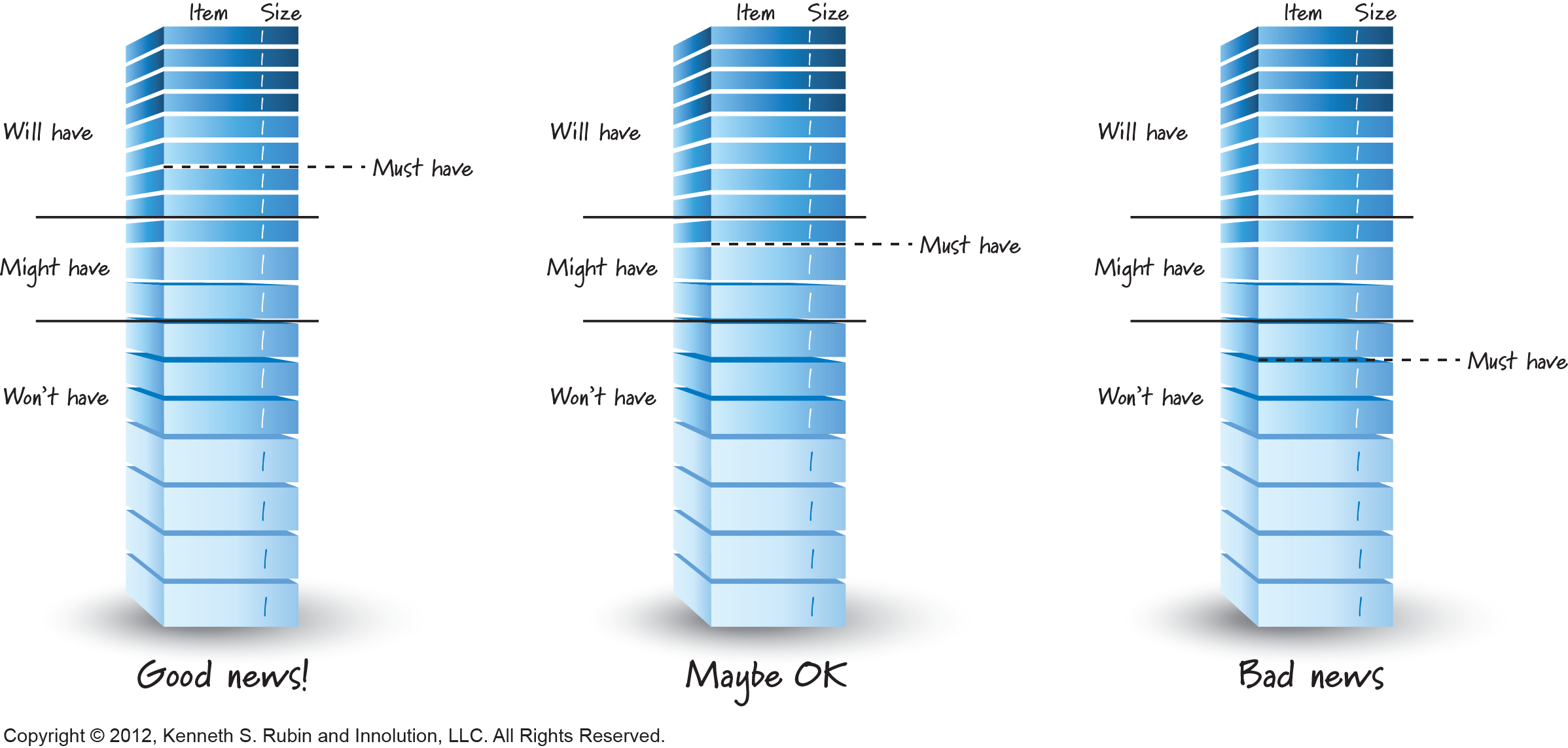Whether your organization intends to deploy every sprint, every few sprints, or continuously, most organizations find some amount of longer-term, higher-level planning to be useful. I refer to this type of planning as release planning. If the term release planning seems inappropriate to your context, replace the term with one that is better suited such longer-term planning or milestone planning.
Many organizations that use agile prefer to use fixed-date planning, where the delivery date is known, and the principal variable is the scope. Read Scope is the Antifragile Degree of Freedom for a deeper explanation of why.
Fixed-date release planning has 6 distinct steps.
Fixed-Date Release Planning: Step 1
The first step in fixed-date release planning is to determine how many sprints are in the release. If all sprint lengths are equal, this is simple calendar math, because you know when the first sprint will start and you know the delivery date.
Fixed-Date Release Planning: Step 2
The second step in fixed-date release planning is to groom the product backlog to a sufficient depth by creating, estimating the size of, and prioritizing product backlog items. You’ll need enough PBIs to plan out to the fixed release date. You can read more about product backlog grooming in Chapter 6 of Essential Scrum.
Fixed-Date Release Planning: Step 3
The third step in in fixed-date release planning is to measure or estimate the team’s velocity as a range (see Estimation and Planning in Scrum: Chapter 7)
Fixed-Date Release Planning: Step 4
The fourth step in fixed-date release planning is is create a will have line by multiplying the slowest number in the velocity range by the number of sprints. Count down that number of points into the product backlog and draw a line.
Fixed-Date Release Planning: Step 5
The fifth step in fixed-date release planning is to create the might have line by multiplying the largest number in the velocity range by the number of sprints. Count down that number of points into the product backlog and draw another line.
Fixed-Date Release Planning: Step 6
The final step in fixed-date release planning is to compare the will have and might have lines to the minimum releasable features (MRFs) in the product backlog. If all of the must-have items are above the will have line, you are in great shape. If not, you will need to decide whether to proceed as planned, revisit the MRFs, pivot, or terminate the project.
The image below shows several variations in how the must-have features (MRFs) might compare to the will have and might have calculations from fixed-date release planning.

If scope is more important than the date, you can use Fixed-Scope Release Planning.